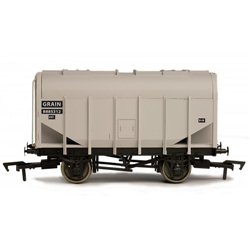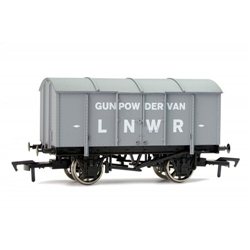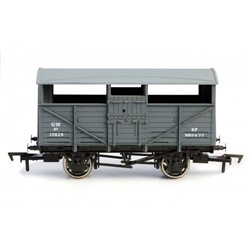If you are soldering a white-metal kit together, you will need to use a lower temperature setting on your soldering...
No products
Product successfully added to your shopping cart
There are 0 items in your cart. There is 1 item in your cart.
Search Tips
Christmas and New Year
We are dispatching orders every weekday apart from Christmas Day, Boxing Day and New Year's Day.
If you select next day delivery at checkout, please note deliveries are not made on public holidays or Sundays.
The shop in Sandown is open 23rd and 24th December, then closed from 25th December, reopening on 30th December.
What are ready-to-run wagons?
a Ready to Run (RTR) wagon refers to a model railway wagon that comes fully assembled and decorated straight from the manufacturer. This means that the model railway enthusiast does not need to perform any assembly, painting, or additional detailing to make the wagon ready for operation on their layout. The concept of RTR wagons is particularly appealing to hobbyists who wish to save time and effort, focusing instead on the broader aspects of building and enjoying their railway models.
Key Features of Ready to Run Wagons
One of the primary advantages of RTR wagons is their pre-assembled nature. Unlike kits that require the hobbyist to painstakingly glue together parts and apply paint and decals, RTR wagons arrive complete with all the necessary components, including wheels, couplings, and detailed liveries. This makes them incredibly convenient for those who may not have the skills, tools, or patience required for assembling kits from scratch. The wagons are typically crafted with high precision, allowing them to be used immediately upon purchase without any modifications.
RTR wagons are renowned for their detailed appearance. Manufacturers often strive to replicate the intricate details of real-life railway wagons, including the various paint schemes, logos, and even weathering effects that mimic the wear and tear seen on actual trains. This level of detail adds a layer of realism to model railways, enhancing the overall aesthetic of a layout. Many RTR wagons are designed to replicate specific historical or contemporary railway companies, allowing enthusiasts to build themed layouts that accurately reflect different eras of British rail history.
In terms of compatibility, RTR wagons are designed to work seamlessly with standard model railway systems. They come equipped with couplings that conform to British model railway standards, such as the popular tension-lock couplers used in OO gauge models. This ensures that RTR wagons can be easily integrated into existing train sets without the need for additional adjustments. Furthermore, these wagons are made to standard gauge specifications, ensuring smooth operation on compatible tracks and reducing the likelihood of derailments or operational issues.
The materials used in the construction of RTR wagons contribute to their durability and realism. Many are made from high-quality plastics or die-cast metal, providing a robust build that can withstand regular handling and operation. This is especially beneficial for younger enthusiasts or those who frequently handle their models. Additionally, the use of these materials allows manufacturers to incorporate fine detailing, such as rivets, handrails, and brake systems, which add to the authenticity of the models. Such details are often difficult for individual hobbyists to replicate with the same level of precision if they were building from a kit.
Another appealing aspect of RTR wagons is the variety and availability. The market offers a wide range of options, from freight wagons and passenger coaches to specialised rolling stock like tankers and brake vans. This variety allows modellers to select wagons that fit specific themes, historical periods, or geographic regions. For instance, an enthusiast interested in the British Rail era can find a plethora of wagons with appropriate liveries and designs from that period. The accessibility of RTR wagons through hobby shops and online retailers also means that enthusiasts can easily acquire models to expand their collections or complete specific layouts.
For newcomers to the hobby, RTR wagons provide a beginner-friendly entry point. The absence of complex assembly means that individuals who are new to model railways can quickly and easily start building their layouts. This is particularly advantageous for younger hobbyists or those who may not yet have the confidence to tackle model kits. RTR wagons allow these enthusiasts to focus on learning about railway operations, track planning, and scenery building without the initial hurdle of assembling and painting rolling stock.
Despite their many advantages, RTR wagons may not offer the same level of personalisation that kit models can provide. Hobbyists who enjoy the challenge of building and customising their models might find RTR wagons less appealing, as the opportunities for individual customisation are somewhat limited. However, for many enthusiasts, the convenience and quality of RTR wagons outweigh this consideration. Additionally, RTR wagons can still be weathered or modified to suit individual preferences, offering a degree of personalisation even in their pre-assembled form.
In conclusion, Ready to Run wagons represent a significant segment of the model railway market in the UK, catering to a wide range of enthusiasts from beginners to seasoned modellers. Their convenience, detailed craftsmanship, and ease of integration into existing layouts make them a popular choice for those looking to build or expand their railway collections. Whether used as a starting point for a new hobby or as a way to enhance an established layout, RTR wagons provide a practical and appealing solution for model railway enthusiasts of all ages.
Click here to receive the tips weekly in your mailbox. You can unsubscribe at any time.










